An unique 4,000-year-old stone structure has been discovered by a team of archaeologists working in the village of Overstone near Northampton, UK. Although the function of this old building is still under investigation, initial findings indicate that the location was occupied for more than 2,000 years.
An unique 4,000-year-old stone structure has been discovered by a team of archaeologists working in the village of Overstone near Northampton, UK. Although the function of this old building is still under investigation, initial findings indicate that the location was occupied for more than 2,000 years.
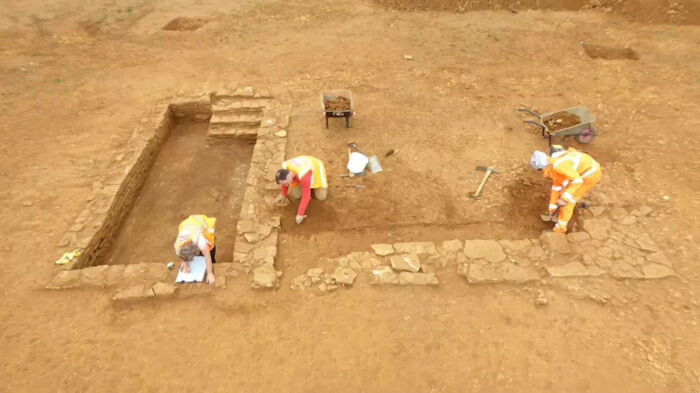
An unusual 4,000-year-old structure was found at the site. Credit: MOLA
This unique stone structure dates to the Roman era (43 AD–410 AD), and it included an underground room in addition to finely painted plasterwork and probably a painted ceiling.
“Archaeologists noted that it looked to have served no practical purpose; hence, it may have been a shrine dedicated to the adjacent spring.
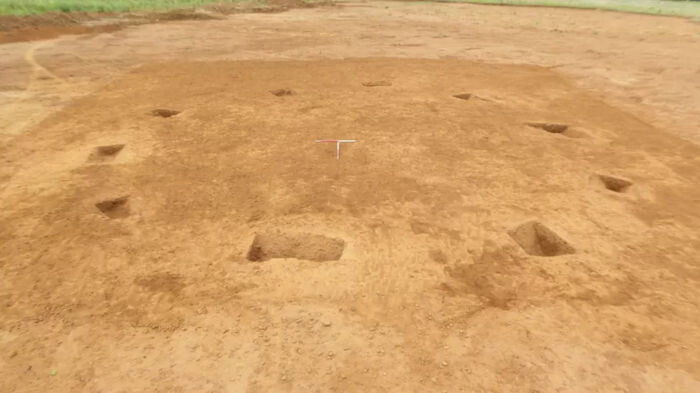
The Bronze Age barrow, a burial site, was found by archaeologists. Credit: MOLA
Large water tanks were also discovered, and at the bottom of these, archaeologists discovered 2,000-year-old organic remains, including a full leather shoe, pinecones, and walnut shells.
The archaeological find was probably the center of religious and ceremonial activities centered on a natural spring.
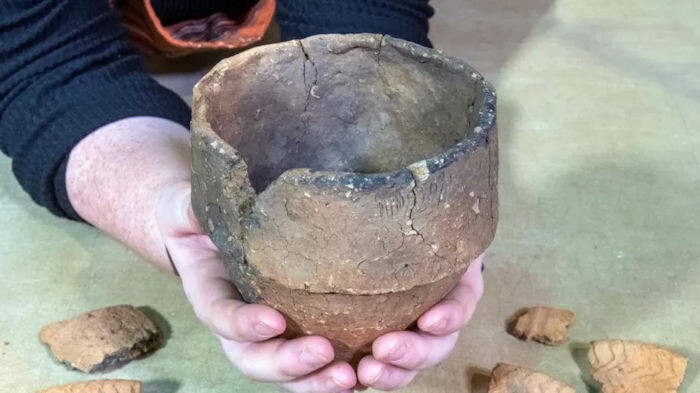
Scientists were surprised to find ancient empty urns. Credit: MOLA
The discovery was made by the Museum of London Archaeology (MOLA), and researchers also discovered Bronze Age and Roman antiquities at the location. The earliest item found at the site was a Bronze Age barrow, which is a type of prehistoric burial mound constructed between 2,000 and 1,500 B.C.
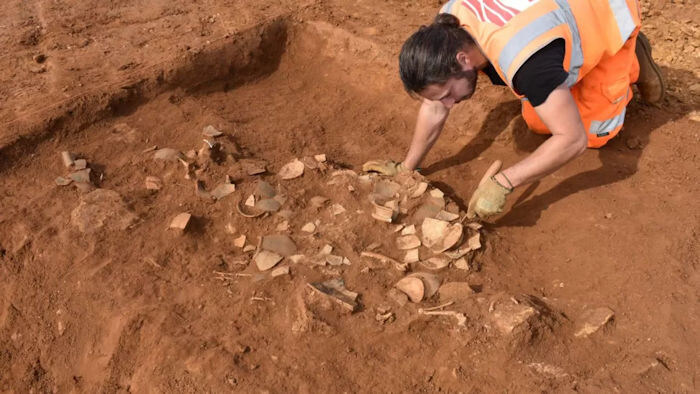
Pottery excavation. Credit: MOLA
This was “a highly significant place for local ancient communities,” Simon Markus, from MOLA told the BBC.
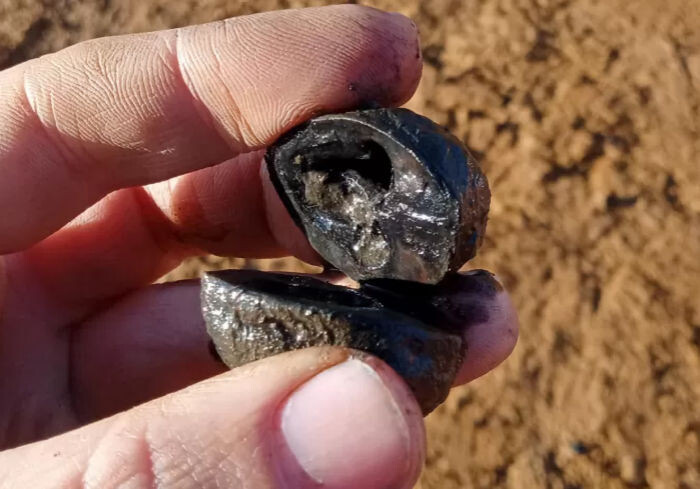
Among the finds was a preserved walnut shell that dates from the Roman era. Credit: MOLA
The MOLA researchers said they made yet another curious find at the site. They discovered five empty urns. There were no signs of any ancient human remains in the urns.
“The fact no human remains were placed within the barrow suggests it may have had a more symbolic rather than functional use,” Simon Markus said.
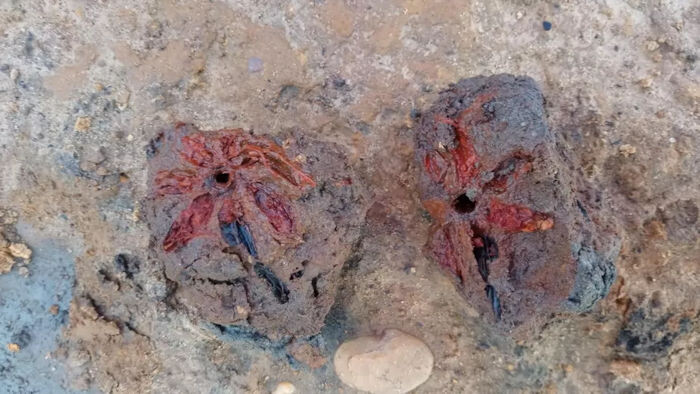
A 2,000-year-old flower was preserved by the waterlogged soil conditions. Credit: MOLA
He continued, “Those pre-existing connotations encouraged people in the Bronze Age to choose this site for the construction of a ritual monument, albeit the site may have been used previously.
Prior to the construction of new homes in the community, archaeologists have been working on the site. The research team will now carry on with their studies in this area, concentrating on the environmental remnants that have been preserved by the spring.








